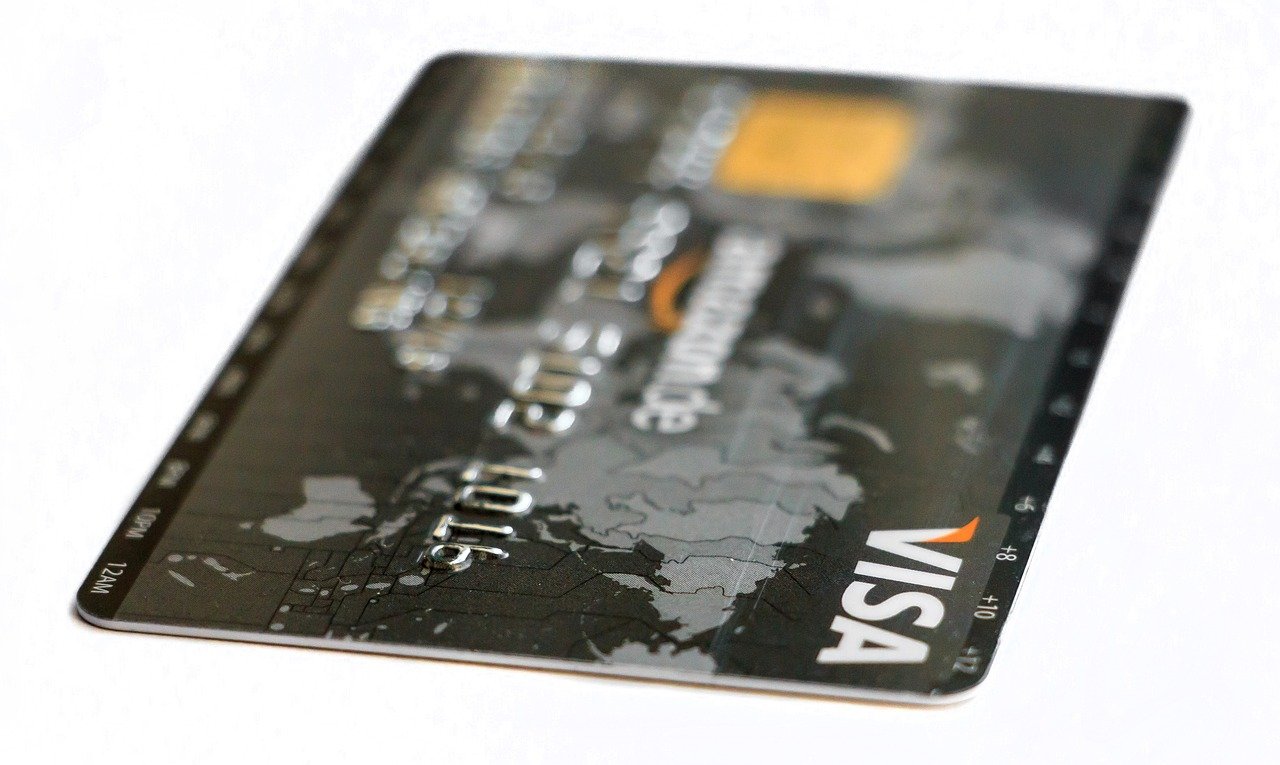Are you considering getting a credit card but want to be aware of the potential risks and drawbacks? Look no further! In this article, we will highlight two crucial aspects to consider before diving into the world of credit cards. First and foremost, credit cards often come with higher interest rates compared to other forms of credit, and it’s important to understand the implications of this. Additionally, we will shed light on the potential risks that come with co-signing for someone else’s credit card, as it can lead to unexpected financial responsibilities. So, let’s explore these topics and equip you with the knowledge you need to make informed decisions about your personal finances!
Overview of Credit Cards
Definition of a credit card
A credit card is a payment card that allows you to borrow money from a financial institution, known as the credit card issuer, to make purchases. It enables you to make purchases and pay for them at a later date, usually on a monthly basis. Credit cards come in various designs and are widely accepted by merchants around the world.
Various types of credit cards
Credit cards come in different types catering to a variety of needs and preferences. Some common types include:
- Rewards Credit Cards: These cards offer rewards such as cash back, points, or travel miles based on the amount of money spent.
- Balance Transfer Credit Cards: These cards allow you to transfer debt from one credit card to another, usually with a low or zero-percent introductory interest rate for a specific period.
- Student Credit Cards: Specifically designed for students, these cards often have lower credit limits and offer benefits like cash back or rewards tailored to young consumers.
- Secured Credit Cards: These cards require a security deposit which serves as collateral, making them a good option for individuals with limited or poor credit history.
- Travel Credit Cards: Ideal for frequent travelers, these cards often offer travel-related perks such as airline miles, hotel rewards, and travel insurance.
Understanding the different types of credit cards available can help you choose the one that best aligns with your lifestyle and financial goals.
Interest Rates on Credit Cards
Importance of understanding interest rates
Interest rates play a crucial role when it comes to credit cards. They determine the cost of borrowing, and failing to understand them can lead to financial difficulties. It is essential to be aware of interest rates to make informed decisions about credit card usage and manage your finances effectively.
Factors influencing credit card interest rates
Several factors influence the interest rates on credit cards, including:
- Credit Score: Your credit score is one of the primary factors determining the interest rate you qualify for. A higher credit score usually translates to lower interest rates, while a lower score can result in higher rates.
- Economic Conditions: The prevailing economic conditions, such as inflation rates and interest rates set by the central bank, can impact credit card interest rates.
- Card Issuer Policies: Each credit card issuer has its own policies and risk assessment criteria which can affect the interest rates they offer. Different issuers may have varying interest rates for similar credit profiles.
Being aware of these factors can help you understand why you may be offered a particular interest rate and allow you to take steps to improve it if necessary.

Higher Interest Rates on Credit Cards
Comparison of credit card interest rates to other forms of credit
Credit cards often have higher interest rates compared to other forms of credit, such as loans or mortgages. While a mortgage might have an interest rate in the low single digits, credit card interest rates can range from 15% to 25% or more. This higher interest rate reflects the lender’s perceived risk of lending money without any collateral or security.
Reasons for higher interest rates on credit cards
There are several factors contributing to the higher interest rates on credit cards:
- Unsecured Nature: Unlike a mortgage or a car loan, credit card debt is unsecured, meaning there is no asset for the lender to claim if you default on the payments. This higher risk for the lender leads to higher interest rates.
- Flexibility and Convenience: Credit cards offer convenience and flexibility, allowing you to make purchases without needing upfront funds. The added convenience and flexibility drive up the interest rates.
- Rewards and Perks: Credit card issuers often provide rewards and perks to attract customers. These incentives are funded in part by the higher interest rates charged to cardholders.
Understanding the reasons behind higher interest rates on credit cards can help you make informed decisions and minimize the impact of these rates on your finances.
Understanding APR
Definition of APR
APR stands for Annual Percentage Rate. It represents the yearly cost of borrowing money on a credit card and includes both the interest rate and any associated fees. The APR provides a broader understanding of the overall cost of credit beyond just the interest rate.
Difference between APR and interest rate
While the interest rate represents the cost of borrowing expressed as a percentage, the APR takes into account additional costs such as annual fees, balance transfer fees, and late payment fees. It provides a more accurate reflection of the total cost of the credit card over the course of a year.
Comparing APRs can help you assess the overall cost of different credit cards and choose the one that best suits your needs and budget.

Calculation of Interest on Credit Cards
Methods used to calculate credit card interest
Credit card interest is typically calculated using one of two methods: the Average Daily Balance (ADB) method or the Daily Balance method. The ADB method takes into account the balance on your card at the end of each day during the billing cycle, while the Daily Balance method calculates interest based on the balance each day.
Example calculation
Let’s consider a hypothetical scenario where you have a credit card balance of $1,000 and an interest rate of 20% per year. If you choose the ADB method and your billing cycle is 30 days long, the interest calculation would look like this:
- Day 1: $1,000 (Balance)
- Day 2: $1,000 (Balance)
- …
- Day 30: $1,000 (Balance)
Using the ADB method, the average daily balance would be $1,000. Multiply this by the interest rate (20% annually), and you would incur interest charges of $16.44 for the billing cycle.
Understanding how credit card interest is calculated can help you manage your finances better, avoid unnecessary charges, and plan for effective debt repayment strategies.
Risk of High-Interest Rates
Negative impact on debt repayment
High-interest rates on credit cards can significantly impact your ability to repay debt. As interest accrues, your outstanding balance will grow, making it challenging to pay off your debt. This can extend the time it takes to become debt-free and increase the total amount repaid.
Accumulation of interest charges
Credit card interest can accumulate quickly, especially with higher interest rates. Even if you make minimum payments, the interest charges can keep growing and prolong your debt repayment journey. The longer it takes to pay off your balance, the more interest you will accrue, and the more money you will ultimately pay to the credit card company.
Understanding the risks associated with high-interest rates can motivate you to take proactive steps to manage your credit card debt effectively.

Credit Card Companies’ Profitability
Role of high-interest rates in credit card companies’ profits
High-interest rates contribute significantly to credit card companies’ profitability. These rates create substantial revenue streams for card issuers, allowing them to cover operating costs, invest in new technologies, and offer rewards programs to attract customers. The interest charges on cardholders who carry balances from month to month provide a consistent income source for credit card companies.
How credit card companies make money
In addition to interest charges, credit card companies generate revenue through other means:
- Annual Fees: Some credit cards charge an annual fee for card membership, providing an additional revenue stream for the company.
- Merchant Fees: Credit card companies charge merchants a fee, typically a percentage of the transaction amount, for processing payments. These fees contribute to the overall profitability of the credit card company.
- Foreign Transaction Fees: When a cardholder makes a purchase in a foreign currency or outside their home country, credit card companies often charge a foreign transaction fee.
Understanding the revenue streams of credit card companies can help you become a discerning credit card user and make informed choices when selecting a card that aligns with your financial goals.
Comparison to Other Forms of Credit
Interest rates on loans
Interest rates on loans, such as personal loans or auto loans, tend to be lower than credit card interest rates. These loans are often secured by collateral, which reduces the risk for the lender. As a result, lenders can offer more favorable interest rates, making loans a potentially cheaper option for borrowing significant amounts.
Interest rates on mortgages
Mortgages are long-term loans used to finance the purchase of a home. Mortgage interest rates are generally lower than credit card rates due to the collateralization of the loan with a property. The lower interest rates make mortgages a more affordable option for financing a home purchase compared to relying solely on credit cards.
Interest rates on personal lines of credit
Personal lines of credit typically have lower interest rates compared to credit cards. Similar to loans, lines of credit may be secured by collateral or backed by a strong credit history, reducing the risk for the lender and resulting in more favorable interest rates.
Understanding how credit card interest rates compare to other forms of credit can help you decide the most cost-effective way to borrow money based on your specific financial needs.
Strategies to Minimize Interest Payments
Paying credit card balances in full
One effective strategy to minimize interest payments is to pay off your credit card balance in full each month. By doing so, you avoid carrying a balance and accruing interest charges. Timely and full payment of your credit card bill allows you to benefit from the convenience and rewards offered by credit cards without incurring any additional costs.
Transferring balances to lower interest rate cards
Another strategy is to consider transferring high-interest credit card balances to a card with a lower or even zero-percent introductory interest rate. Balance transfer credit cards often offer a promotional period during which you can pay off your debt at a lower rate. This can help you save on interest charges and accelerate your debt repayment.
By implementing these strategies and staying disciplined with your credit card usage, you can minimize interest payments and maintain a healthy financial position.
Co-Signing Risks
Responsibility for someone else’s credit card debt
Co-signing for someone else’s credit card means you are assuming financial responsibility for their debt. If the primary account holder fails to make payments or defaults on the credit card, you become legally obligated to repay the debt. Co-signing exposes you to potential financial risks and can impact your credit history and score.
Potential consequences of co-signing
Co-signing for someone else’s credit card can have several consequences, including:
- Negative Impact on Credit Score: If the primary account holder misses payments or defaults, your credit score may be negatively affected. This can make it more challenging for you to access credit in the future or secure favorable interest rates.
- Debt Repayment Obligations: If the primary account holder fails to make payments, the creditor can pursue you for the outstanding balance. This can lead to legal actions and potential financial hardship.
- Strained Relationships: Co-signing for someone’s debt can strain relationships, particularly if the primary account holder’s financial irresponsibility places an undue burden on you.
Considering the potential risks, it is essential to thoroughly evaluate your relationship with the primary account holder, their financial habits, and your own financial capabilities before deciding to co-sign for a credit card.
In conclusion, credit cards offer convenience and flexibility, but it is crucial to understand the various aspects related to them, including interest rates, APR, and the risks involved. By being aware of these factors, comparing credit card offers, and implementing effective debt repayment strategies, you can make the most of your credit card experience while minimizing the impact of high-interest rates on your financial well-being. Remember to exercise caution when considering co-signing for someone else’s credit card, as it can result in financial responsibility for their debts and potential negative consequences for your own credit profile.

